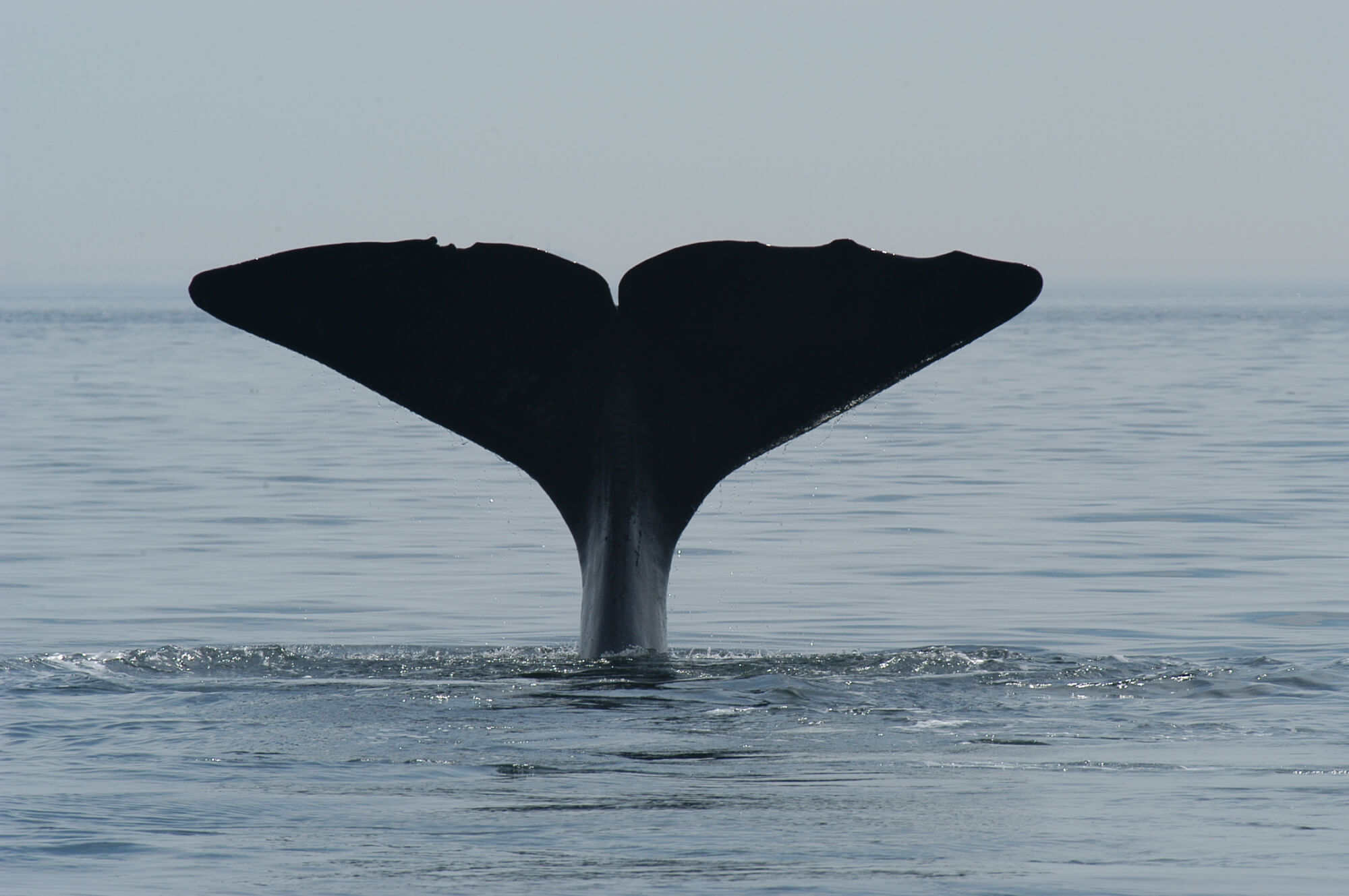“It’s been a dream season,” says a captain/naturalist as he shares a video of a sperm whale he shot off Les Escouminson August 19 with GREMM researchers. A visit to the Saguenay-St. Lawrence Marine Park sector by a sperm whale is rather exceptional. The last documented record was in September 2014, when two sperm whales made a brief visit off the coast of Les Bergeronnes. The sperm whale’s favourite prey is squid, but occasionally feeds on pelagic fish, groundfish and crustaceans. Was it in pursuit of a particularly large school of prey, or just exploring the area? Impossible to say. The animal has not been seen again since then.
In Pointe-des-Monts, the large fin whale spouts seen last weekhave disappeared from the horizon. Seabirds have also left the area. There are still a dozen or so minke whales roaming the area to the delight of observers posted near the lighthouse.
On August 19, for the fourth week in a row, Anik Boileau crossed paths with the calf of Tracks in the bay of Sept-Îles. This one-year-old humpback whale has a large zipper-shaped scar on one of its flanks, the result of a collision with a boat propeller. Two years ago to the day, Anik had photographed Tracks in a group of female humpbacks. This researcher is delighted by the Government of Quebec’s announcement on August 17 whereby two biodiversity reserves are expected to be created in Sept-Îles, including one spanning 69 km2around the Sept-Îles archipelago. “It might allow us to increase awareness-raising efforts in our area!”, she says, hopeful that it will help promote the responsible observation of marine mammals by recreational boaters who frequent the area.
On August 21, passers-by stop on the promenade overlooking Tadoussac Bay. A minke whale is surface feeding off Pointe-Rouge. Its acrobatics to congregate and engulf its prey are so spirited that it can be spotted from the other side of the bay. For over an hour, water splashes under the assault of the minke whale. Was it eating fish or krill? In any case, it had quite an appetite!
“She just surfaced for a breath!” exclaims a cruise captain at the end of the line. From where he is sitting in his company’s booth, he can see through the window the tall column-shaped spout of a blue whale. For the past few days, two blue whales have been visiting Gaspé Bay, as have three fin whales These giants are attracted by large clouds of krill. Between 50 and 100 white-sided dolphins are also regularly seen in the bay. With the arrival of blue whales and the new regulations in effect, the captain equipped his boat with a rangefinder in order to measure the distance he keeps vis-à-vis the whales. He wants to ensure he complies with the prescribed distance, not to mention showing a little respect for the marine mammals.
Click on the whale or the seal icon to find out more about the corresponding observation (specie, number of individuals, info, pictures). To enlarge the map, click on the top right corner icon.
To see the list of the observations, click on the top left corner.
This map represents an order of magnitude rather than a comprehensive survey.
Legend for the whales
Light grey: Beluga
Dark grey: Fin Whale
Black: Minke Whale
Light blue: Humpback Whale
Dark blue: Blue Whale
Violet: Right Whale
Red: Narwhal
Yellow: Killer Whale
Legend for the dolphins
Brown: Harbour Porpoise
Light grey: White-sided Dolphins
Legend for the seals
Grey: Grey Seal
Brown: Harp Seal
Kaki: Harbour Seal
Legend for the sharks
Light grey: Basking Shark
Legend for the turtles
Dark blue: Leatherback Sea Turtle





